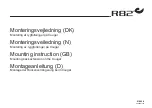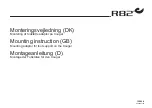
S
(18cm–28cm)
M
(23cm–38cm)
L
(33cm–48cm)
A
B
C
D
S
M
Technical specification of a hip belt
D
C
B
A
45°
60°
90°
30°
Medical terminology used in specification
(38mm)
(57mm)
(18cm)
(127cm)
(38mm)
(64mm)
(23cm)
(142cm)
L
(50mm)
(76mm)
(28cm)
(152cm)
1
2
3
Hip belts – Selection Guide
How to select a belt: Measure hip width across the greater
trochanters with the person seated. Then select a size according to
the table below, consider also weight changes and clothing.
push with his/her hands. This principle works as well with pelvis
obliquity, rotation, and other asymmetrical postures.
Attachment angles:
The angle at which the belt is attached to the chair frame hasa direct
effect on the angle of pull on the pelvis. The
general principle is to imagine the
therapist standing in front of the
seated person using his/her hands
to support or correct the position
of the user. The belt should
extend the therapist's arms and
should be anchored to the
chair frame at the same angle as
the therapist's arms. The belt shall pull
into the point where the therapist would
NOTE
A 60° angle of attachment – the belt positioned inferior to the ASIS –
effectively prevents the user with a posterior pelvic tilt from slipping
underneath the belt.
A higher attachment on the backrest assists in positioning the user
with an anterior pelvic tilt.
A 30° angle of attachment pulls the back against the top of the pelvis,
but is problematic for users with a neutral
or posterior pelvic tilt.
The secondary straps of a four-point belt are attached to the frame
between 45° and 90° to hold the primary strap in place
and to prevent the belt from riding into the abdomen or twisting.
Tightening the straps
Always keep the belt tightened properly at adjustment straps during
daily use to ensure correct placement.
Attaching to the frame
1. A simple system. Allows attachment and adjustment.
Readjustment is required after removal and reattachment of the
straps.
2. A clip buckles system. Quick and easy attachment to the
wheelchair and removal. Allows precise positioning of anchoring
points on the frame. This system does not require readjustment
after removal.
ASIS – anterior superior iliac spine
AIIS – anterior inferior iliac spine
PSIS – posterior superior iliac spine
PIIS – posterior inferior iliac spine
N.V. Vermeiren N.V. Vermeirenplein 1-15 B-2920 Kalmthout Belgium Tel. : +32 (0)3 620 20 20 Fax: +32 (0)3 666 48 94 www.vermeiren.be [email protected]
























